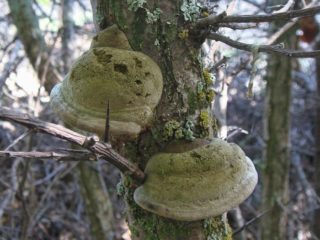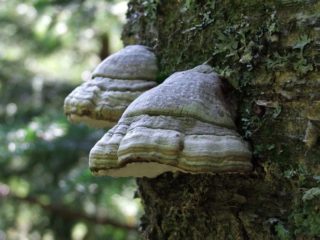Content
The humpbacked polypore belongs to the Polyporovye family. Among mycologists, the following synonymous names for woody fungus are known: Trametes gibbosa, Merulius, or Polyporus, gibbosus, Daedalea gibbosa, or virescens, Lenzites, or Pseudotrametes, gibbosa.
In popular literature, the scientific name Humpbacked Trametes is widespread. The definition of the species arose from a medium-sized tuberous eminence at the top of the fungus.
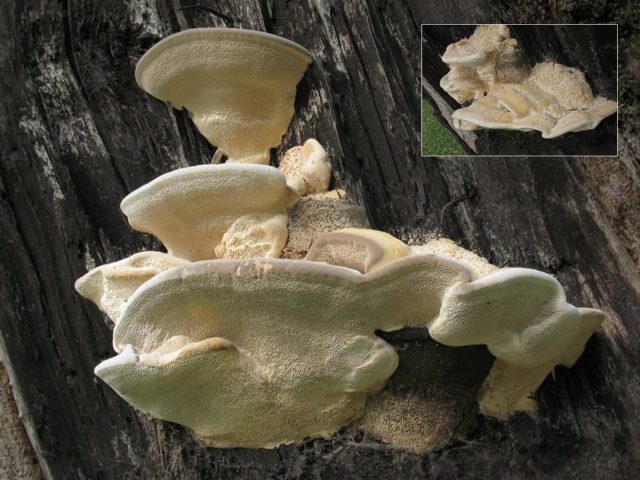
Spore-bearing tubes are located radially from the base
Description of the humpback tinder fungus
In annual fruiting bodies, cantilever caps are sessile, semicircular or almost rounded, 3-20 cm wide. Polypores grow one at a time or in small families, are attached to the wood with a wide base, there are no legs. The tinder fungi grow in thickness up to 6.5 cm. The flat caps are humped due to the tubercle rising at the base. Young skin is velvety, white or grayish. Then, various in color, but darker concentric stripes from olive to brown tones are formed. As the tinder fungus grows, the skin becomes smooth, without pubescence, of various creamy-ocher shades.
A feature of the humpbacked species is that often the fruiting body is overgrown with epiphytic algae that take food from the air. The edge of the fruiting body is also brown or pink, pubescent. It becomes acute with age. The firm, white or yellow flesh consists of two layers:
- the top is soft, fibrous, gray;
- bottom tubular - cork, whitish.
Odorless mushroom.
Spores develop in white, yellowish or yellow-gray tubules. The depth of the tubes is up to 1 cm, the pores are slit-like, the spore powder is white.
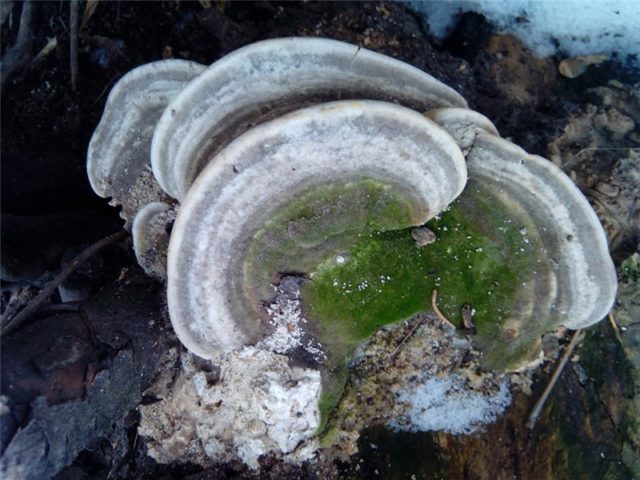
From a distance, mushrooms can appear green due to algae
Where and how it grows
Humpbacked polypore - saprotroph, grows more often on felled wood in the temperate zone of Eurasia and North America, prefers a warmer climate. Humpbacked fruit bodies are found on deciduous species: beech, hornbeam, birch, alder, poplar and other trees.
But sometimes saprophytes destroy living wood, causing white rot that spreads quickly. The humpback tinder fungus begins to form from the middle of summer, grows until the first frost. It remains in winter in favorable conditions.
Is the mushroom edible or not
No toxic substances were found in the fruit bodies of the humpback tinder fungus. But mushrooms are inedible because of the very hard cork tissue, which becomes tough after drying.
Doubles and their differences
There are several inedible woody mushrooms similar to the humpbacked species:
- graceful tinder fungus, which is rare in Russia and much smaller in size;
- harsh haired trametus;
- Dickens' dedaleya, common only in the Far Eastern forests;
- birch lenzites.
A special characteristic of the humpback tinder fungus is the placement of slit-like pores, which diverge radially from the base to the edge of the cap. In addition, there are more signs:
- no villi are visible on the velvety skin;
- the pores are rectangular, creamy yellow;
- the tubular layer in adult fungi is often labyrinth-like.
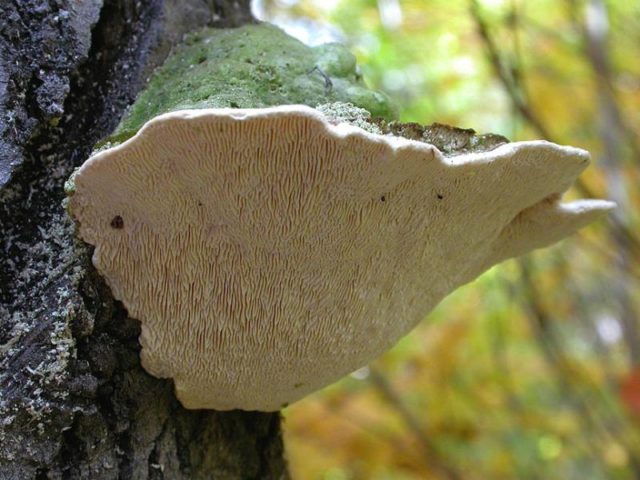
The graceful trametes have pores that are similar in shape, but diverge in the form of a fountain from several central points.
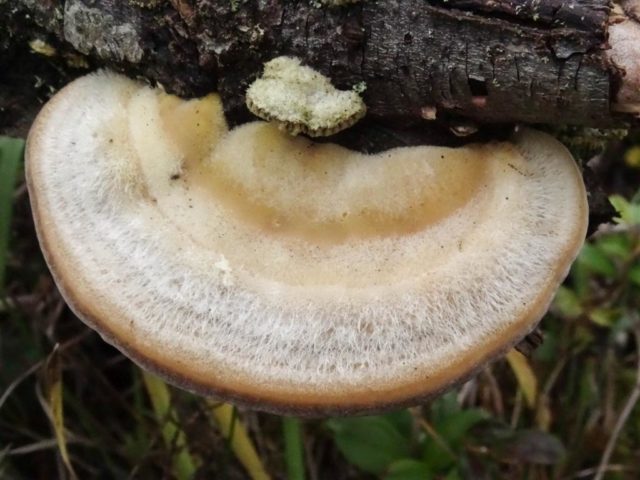
Stiff-haired trametus is distinguished by well-pronounced pubescence of the cap and elongated pores
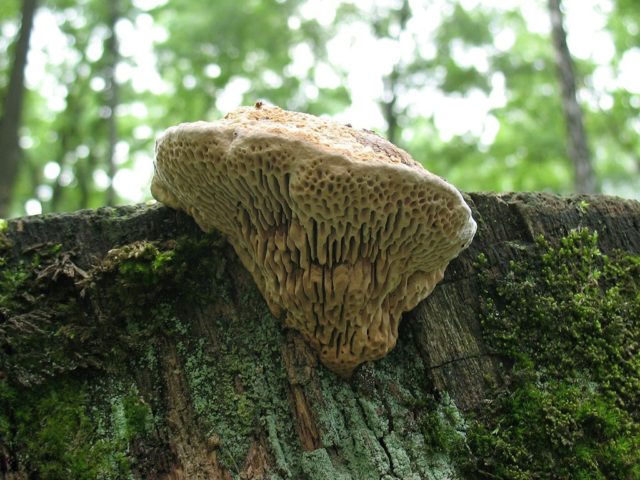
The flesh of the deadale is creamy brown, much darker than that of the humpback
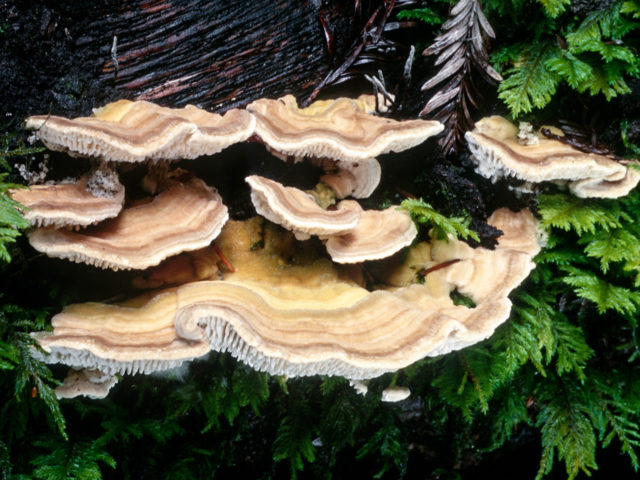
The bottom of the lensites is lamellar
The use of a humpback tramet
When studying the fruiting bodies of this species of tinder fungi, substances were found that help to stop inflammatory processes and prevent the development of viruses, as well as an antitumor effect. Traditional medicine experts use natural raw materials for bacterial infections and overweight. Folk craftsmen use the tough pulp of tree mushrooms to create small decorative crafts for interiors and landscape and park architecture.
Conclusion
The humpback tinder fungus is often found in forests. Although fruiting bodies are inedible due to their tough pulp, they are sometimes used for decoration. On living trees, fungi cause significant harm, causing white rot.
